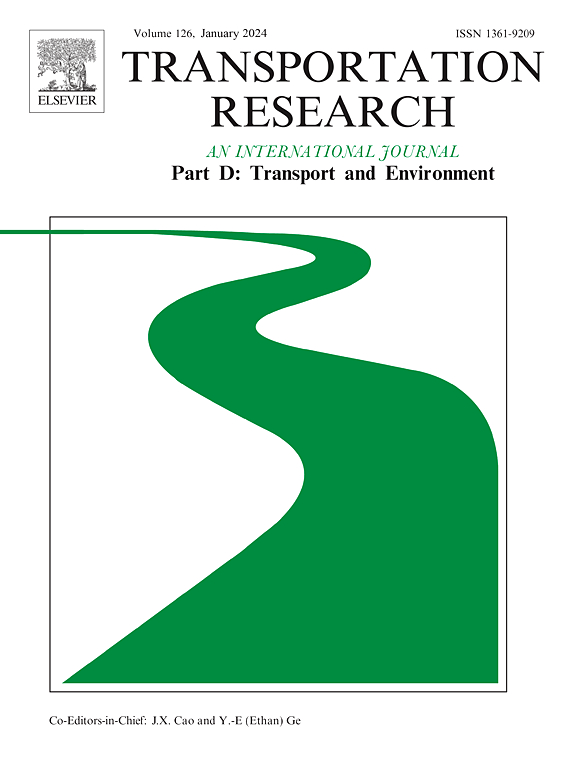再生沥青中挥发性有机化合物的排放特征及机理
IF 7.7
1区 工程技术
Q1 ENVIRONMENTAL STUDIES
Transportation Research Part D-transport and Environment
Pub Date : 2025-08-13
DOI:10.1016/j.trd.2025.104961
引用次数: 0
摘要
再生剂在恢复老化沥青的性能和促进沥青路面材料的循环利用方面发挥着关键作用。然而,它们对再生沥青中挥发性有机化合物(VOCs)排放的影响仍然知之甚少。本文首次对含再生剂的再生沥青的挥发性有机化合物排放行为进行了系统的研究。结果表明,修复剂不仅可以恢复老化沥青的性能,而且可以激活老化过程中形成的大分子化合物。返老还衰剂的挥发性有机物排放特征随返老还衰剂类型的不同而不同:硫代二丙酸二桂酯组成简单,释放的挥发性有机物种类较少,但由于热分解为烷烃和含氧化合物,释放的挥发性有机物峰面积较高;再生植物油底和再生生物油底含有丰富的轻组分,产生的挥发性有机化合物更加多样和复杂。再生沥青的挥发性有机化合物排放特征取决于其物理化学性质,如饱和、芳香族、树脂和沥青质的成分和分子量分布。本文章由计算机程序翻译,如有差异,请以英文原文为准。
Emission characteristics and mechanisms of VOCs in recycled asphalt incorporating rejuvenators
Rejuvenators play a key role in restoring the performance of aged asphalt and promoting the recycling of asphalt pavement materials. However, their impact on volatile organic compounds (VOCs) emissions from recycled asphalt remains poorly understood. This paper presents the first systematic investigation into the VOCs emission behavior of recycled asphalts incorporating rejuvenators. Results show that rejuvenators not only restore aged asphalt performance but also activate macromolecular compounds formed during aging. The VOCs emission characteristics vary with the type of rejuvenator: dilauryl thiodipropionate, with a simple composition, releases fewer VOC types but higher peak areas due to thermal decomposition into alkanes and oxygenated compounds; recycled vegetable-oil bottom and recycled bio-oil bottom, rich in light components, generate more diverse and complex VOCs. VOC emission characteristics from recycled asphalt depend on its physicochemical properties, such as Saturate, Aromatic, Resin, and Asphaltene components and molecular weight distribution.
求助全文
通过发布文献求助,成功后即可免费获取论文全文。
去求助
来源期刊
CiteScore
14.40
自引率
9.20%
发文量
314
审稿时长
39 days
期刊介绍:
Transportation Research Part D: Transport and Environment focuses on original research exploring the environmental impacts of transportation, policy responses to these impacts, and their implications for transportation system design, planning, and management. The journal comprehensively covers the interaction between transportation and the environment, ranging from local effects on specific geographical areas to global implications such as natural resource depletion and atmospheric pollution.
We welcome research papers across all transportation modes, including maritime, air, and land transportation, assessing their environmental impacts broadly. Papers addressing both mobile aspects and transportation infrastructure are considered. The journal prioritizes empirical findings and policy responses of regulatory, planning, technical, or fiscal nature. Articles are policy-driven, accessible, and applicable to readers from diverse disciplines, emphasizing relevance and practicality. We encourage interdisciplinary submissions and welcome contributions from economically developing and advanced countries alike, reflecting our international orientation.

 求助内容:
求助内容: 应助结果提醒方式:
应助结果提醒方式:


